Table of Content
Flutter and React Native are two leading cross-platform app development frameworks that empower businesses to create robust, high-performance mobile applications for iOS and Android platforms.
Flutter is an open-source UI toolkit developed by Google that uses the Dart programming language to deliver beautiful, natively compiled applications.
React Native, created by Facebook, leverages the popular JavaScript language and React library to build mobile apåps with a native look and feel.
Both frameworks offer advantages in terms of development speed, code reusability, and community support. As a result, numerous clients have adopted them to build successful apps in various industries.
This paper aims to compare Flutter and React Native comprehensively. Therefore, it provides a valuable context for clients and developers in their decision-making about the ideal mobile app development project framework.
The Flutter Framework
Flutter was first introduced as a “Sky” project in 2015 during the Dart developer summit. The initial goal was to create a high-performance framework for building rich, reactive, native mobile apps across platforms, primarily Android and iOS. Since its official release in 2017, Flutter has evolved significantly, with several updates, improvements, and added support for Windows, macOS, and Linux. Flutter is widely recognized for its fast, expressive UI development and hot-reload feature, making it a preferred choice for app developers who value a seamless and efficient development process.
React Native Framework
React Native is an open-source mobile app development framework developed in 2013 to address the need for a unified approach to developing native-like mobile apps for iOS and Android.
React Native is built on React—a popular JavaScript library for creating web applications. It extends the concepts and design principles to enable mobile app development. As a result, React Native ensures a consistent and efficient development experience for high-performance mobile apps in Android and iOS in a seamless and unified approach.
Since its release (2015), React Native has undergone continuous evolution, showcasing significant improvements and features. With a strong community and backing from Facebook, React Native has seen an increase in platform support, performance enhancements, and the addition of modern JavaScript features, making it a popular choice among developers.
Flutter Vs. React Native Technical Comparison
Flutter and React Native both offer advantages and trade-offs. For example, Flutter’s use of Dart offers a smooth, high-performance app development experience. In contrast, React Native’s dependence on JavaScript provides a well-known landscape for web developers and access to a more extensive ecosystem.
The cross-platform framework choice depends on the development team’s specific needs, preferences, and priorities. The following section presents a table of the main Flutter vs. React Native technical differences.
| Category | Flutter | React Native |
| Programming Language | Dart: statically-typed, object-oriented language developed by Google. | JavaScript: widely-used, dynamically-typed scripting language popular in web development. |
| -Ease of learning, improved performance, and rapid development. Dart has a smaller community than JavaScript but a rapidly growing Flutter ecosystem with numerous plugins and libraries. | -Extensive ecosystem, large developer community, and a rich ecosystem of libraries and tools. | |
| -Rich standard library, strong typing, async/await, and sound null safety to minimize runtime errors and improve app stability. | -Highly versatile but dynamic nature may lead to runtime errors and a less predictable codebase than Dart. | |
| UI Components | Widget-based approach, a comprehensive set of customizable, pre-built widgets for Material Design and Cupertino (iOS) style apps. | Utilizes native UI components using the platform’s native UI elements. |
| CPU Usage | -Efficient CPU usage due to Dart’s AOT compilation into native machine code. | -Relies on JavaScript bridge, which can introduce CPU overhead in complex applications. |
| -Static typing and efficient garbage collection minimize CPU overhead and improve app performance. | -Proper optimization techniques, like code splitting and lazy loading, can help reduce CPU usage. | |
| GPU Usage | -Skia graphics engine renders UI components, taking full advantage of GPU acceleration. | -GPU usage depends on the platform’s native rendering capabilities. |
| -Smooth animations, transitions, and complex graphical effects, even on low-end devices. | -Generally good GPU performance, but complex animations and transitions might require third-party libraries or additional work. |
The table comprehensively compares Flutter and React Native, highlighting key aspects such as programming language, UI components, CPU usage, GPU usage, and community and ecosystem. Based on the Dart programming language, Flutter offers efficient CPU usage due to its AOT compilation and features a widget-based approach for UI components. In addition, its Skia graphics engine ensures smooth animations, transitions, and high-performance GPU usage. However, Dart has a smaller community compared to JavaScript, although the Flutter ecosystem is growing rapidly.
On the other hand, React Native uses the popular JavaScript language, which has an extensive ecosystem and a large developer community. React Native relies on native UI components, and its GPU usage depends on the platform’s native rendering capabilities. While CPU usage can be affected by the JavaScript bridge, proper optimization techniques can help improve performance. In conclusion, both Flutter and React Native have their advantages and trade-offs. Choosing between the two depends on factors such as performance requirements, familiarity with the programming language, and the desired look and feel for the app.
App Startup Time
When evaluating the characteristics of Flutter vs. React Native, it is essential to consider the impact of app startup time on the user experience (UX) and weigh against other factors such as UI components, preferred programming language, and the available ecosystem.
Dart (the programming language used by Flutter) supports both Ahead-Of-Time (AOT) compilation and Just-In-Time (JIT) compilation. Flutter generally offers faster app startup times due to Dart’s Ahead-Of-Time (AOT) compilation, which converts the source code directly into native machine code before launching the app.
As a result, the app can start running immediately without requiring Just-In-Time (JIT) compilation or interpreting the code at runtime. This reduces the app’s initialization overhead and results in faster startup times. Furthermore, Flutter’s efficient garbage collection and static typing contribute to the overall performance, enhancing the app startup experience.
While AOT compilation is used for release builds to ensure faster app startup times and better overall performance, JIT compilation is used during development for faster development cycles and hot-reloading capabilities.
When developing a Flutter app, designers work in debug mode using JIT compilation. This allows for features like hot reloading, where changes in the code can be injected into the running app without the need for a complete restart. This significantly speeds up the development process and enables rapid iterations. JIT compilation in debug mode also provides additional runtime checks and debugging information that is helpful during development.
However, when an app is built for release, Flutter switches to AOT compilation. This process converts the Dart source code into native machine code, executed directly by the device’s CPU without needing an interpreter or JIT compiler. AOT compilation results in faster app startup times, reduced memory usage, and improved performance, making it the preferred compilation mode for release builds.
React Native, conversely, uses the JavaScriptCore engine (or Hermes for Android, if enabled) to execute JavaScript code. The JavaScriptCore engine is a Just-In-Time (JIT) compiler that compiles JavaScript to native machine code during runtime. However, on iOS, due to Apple’s restrictions, JIT compilation is not allowed for third-party apps.
JavaScriptCore runs in two different modes depending on the environment:
- iOS devices (actual devices): Due to Apple’s security policies, JIT compilation is not allowed for third-party apps on iOS devices. Therefore, JavaScriptCore runs in interpreter mode on actual iOS devices, which may result in slower execution compared to JIT mode.
- iOS simulators: On iOS simulators, JIT compilation is allowed, so JavaScriptCore runs in JIT mode, offering faster JavaScript execution compared to the interpreter mode.
React Native apps generally have slower startup times compared to Flutter, as they rely on JavaScript interpretation or JIT compilation at runtime. This difference is more pronounced on iOS devices, where JIT compilation is not allowed.
If you choose the React Native framework and want to improve the startup time, you can use the following optimization techniques:
- Hermes (for optimizing Android apps)
- Reduce Bundle Size (removing unused code, using code splitting, and lazy loading components or modules)
- Optimize Images and Rendering Functional Components
- State Management Optimization
- Debounce or Throttle User Input Events (reduce the frequency of updates)
- Optimize Native Modules
- Use Monitoring Performance Tools (Flipper, Reactotron)
Flutter Vs. React Native User Interface and User Experience
Choosing the right framework is crucial for success in the mobile app development landscape. Flutter and React Native offer unique benefits and drawbacks regarding UI components and customization. Following is a comprehensive comparison table highlighting the key differences between these two frameworks to support clients in making an informed decision. Connect with Krasamo UI/UX designers and developers to discuss the strengths and limitations of each framework applied to your use case regarding UI design, rendering, and platform-specific customization.
Criteria | Flutter | React Native |
| UI Components | Widget-based approach | Utilizes Native UI components |
| Customization Options | -Offers a comprehensive set of customizable, prebuilt widgets for Material Design (Android) and Cupertino (iOS) style apps. -Custom widgets creation -Easy styling and theming | -Access to platform-specific UI elements and APIs to create more native-like experiences -Third-party libraries for additional UI components -Native modules for greater flexibility for platform-specific customization |
| Rendering | Widgets are rendered by the graphics engine Skia, resulting in a more consistent look and feel across platforms and high-performance UI rendering. | Platform’s native rendering for native-like UI may require extra work for consistency across platforms. |
| Consistency | -High level of consistency across platforms with less effort -Same widget set for Android and iOS | -Different components for Android and iOS |
| When to choose | -For consistent UI and high customization across platforms -Rich animations -Focus on high-performance rendering -Faster development with hot reload | -Utilize native UI components for a native look and feel -Leverage existing JavaScript skills -Access to native platform features -Access to a vast JavaScript ecosystem |
The specific requirements and constraints of a particular project might need research and consideration of additional factors when deciding which framework to use. Nevertheless, this table should provide a solid starting point for developers and stakeholders to begin their decision-making process.
Flutter Vs. React Native: Code Reusability and Code Sharing
When evaluating Flutter vs. React Native, you must assess the flexibility and complexity of each framework regarding code reusability, platform code sharing, and architecture.
Code Reusability in Flutter and React Native
Flutter’s code reusability is based on its widget system, which underpins UI components and can be reused within an app or across projects. Widgets are categorized as stateless (simple, immutable UI components) or stateful (complex components with internal state). Custom widgets allow developers to encapsulate functionality and design, enhancing reusability and maintaining a consistent, clean codebase.
React Native, on the other hand, promotes reusability using a component-based architecture and the React JavaScript library. Developers create reusable, self-contained components encapsulating UI and logic, which can be reused within an app or across projects, fostering a consistent codebase. However, third-party libraries or platform-specific code may cause inconsistencies in code structure.
Code Sharing in Flutter and React Native
Flutter’s “write once, run everywhere” approach allows code sharing between Android and iOS platforms using its rendering engine to draw UI elements for both, promoting a consistent codebase. However, platform-specific customizations may be needed for features like sensors, cameras, or GPS, requiring developers to use platform channels or plugins for native code communication.
React Native’s “learn once, write anywhere” approach supports component logic sharing across platforms but may require platform-specific UI customization. Although React Native bridges JavaScript and native code for native API interaction, developers must understand platform nuances and know potential performance implications when bridging JavaScript and native code.
Third-Party Libraries and Ecosystems
When comparing Flutter and React Native, developers must examine the accessibility, compatibility, and maintainability of libraries, along with the robustness of community backing. Furthermore, they should be aware of potential challenges, including library maturity, dependency management, and licensing concerns, to prevent expensive issues during development or after the project’s commencement.
A diverse ecosystem of libraries and plugins saves developers time and effort by providing pre-built solutions. React Native has a more extensive ecosystem due to its long existence, while Flutter’s ecosystem is rapidly expanding with new libraries for common use cases.
Compatibility and maintainability are crucial when selecting third-party libraries for a framework. Poorly maintained libraries can cause long-term issues, including security vulnerabilities and incompatibilities with updated framework versions. Therefore, developers must carefully evaluate library maintainability when deciding between Flutter vs. React Native.
Community support is vital for a framework’s success, promoting knowledge sharing, bug fixes, and library development. React Native benefits from large JavaScript and React communities, while Flutter, backed by Google, has a growing developer base. React Native’s larger community may provide more resources and support for developers seeking solutions or learning from peers.
Hot Reload and Real-time Updates
Flutter and React Native offer hot reload features, allowing developers to make changes in their code without rebuilding the entire application, saving time and effort during the development process. In addition, they both offer real-time updates and error recovery with comparable speeds and different implementations, depending on the project requirements.
| Feature | Flutter Hot Reload | React Native Fast Refresh |
| Implementation | Built into the framework | Built on top of React’s core functionality |
| Injects updated source code into Dart VM | Reloads only modified components | |
| Speed | Milliseconds to a few seconds | Milliseconds to a few seconds |
| Limitations | -Can’t update main() function | -May not preserve state if modified directly |
| -Can’t update global/static variables | -Requires full rebuild for native code | |
| -Can’t update stateful widget constructors | ||
| Recommendations | Great for rapid UI iterations | Ideal for projects with JavaScript/React familiarity |
Flutter’s hot reload feature is an integral part of the framework. It injects updated source code into the Dart VM, automatically rebuilding the widget tree and enabling developers to see changes nearly instantaneously.
Flutter’s hot reload is typically fast, displaying updates within milliseconds to a few seconds based on change complexity, allowing developers to fix runtime errors in updated code without restarting the app.
Flutter’s hot reload has limitations, such as not updating the app for changes in the main() function, global/static variables, or stateful widget initialization code, necessitating a full restart in these cases.
React Native employs Fast Refresh, improving previous Hot Reloading and Live Reloading features. Based on React’s core functionality, it reloads only modified components, preserving the state of the remaining components in the app.
React Native’s Fast Refresh swiftly updates components and supports error recovery, allowing developers to fix issues and automatically retry rendering without interruption.
React Native’s Fast Refresh has limitations, such as potentially not preserving state when directly modified within a component and requiring a full rebuild for changes in native modules or code.
Flutter Vs. React Native Debugging Tools
Debugging tools are crucial in the development process, as they aid in identifying and resolving issues within applications. Therefore, comparing Flutter vs. React Native debugging capabilities is vital for understanding their impact on the development experience and choosing a framework that best suits a team’s expertise, preferences, and project needs.
| Framework | Debugging Tool | Description |
| Flutter | Flutter DevTools | A comprehensive suite of debugging and profiling tools, including a widget inspector, performance profiler, memory profiler, and network profiler. |
| Dart DevTools | Designed for Dart language debugging and can also be used for debugging Flutter applications. | |
| IDE Integrations | Strong integrations with popular IDEs like Visual Studio Code and Android Studio, providing debugging support within the development environment. | |
| React Native | Chrome Developer Tools | Allows developers to debug JavaScript code using Chrome Developer Tools, a familiar environment for web developers. |
| React Developer Tools | A browser extension specifically designed for React, which can be used to debug React Native components. | |
| Reactotron | A standalone desktop application that provides advanced debugging and inspection capabilities for React Native applications. | |
| Native Debugging | Supports native debugging tools like Xcode for iOS and Android Studio for Android, allowing developers to debug native modules and platform-specific code. |
Besides the project requirements and complexity, various factors like learning curve, code reusability, ecosystem, debugging tools, platform customization, performance optimization, and agile team expertise impact the development time when choosing between Flutter and React Native for mobile app development.
Mobile app developers from Krasamo have learned lessons. They can discuss your use case and provide a detailed assessment of Flutter vs. React Native for selecting the right framework.
Evaluating the expertise of a mobile app development company is critical when hiring an outsourced partner. Consider asking for references about other projects they have engaged in and successful applications developed.
At Krasamo, we have in-house teams in our headquarters in Dallas, Texas, and our subsidiary in Aguascalientes, Mexico, where we offer nearshore mobile development services at lower costs.
We invite you to contact us to discuss your needs further with a mobile app development expert.
Learn more about the Top Benefits of Flutter.
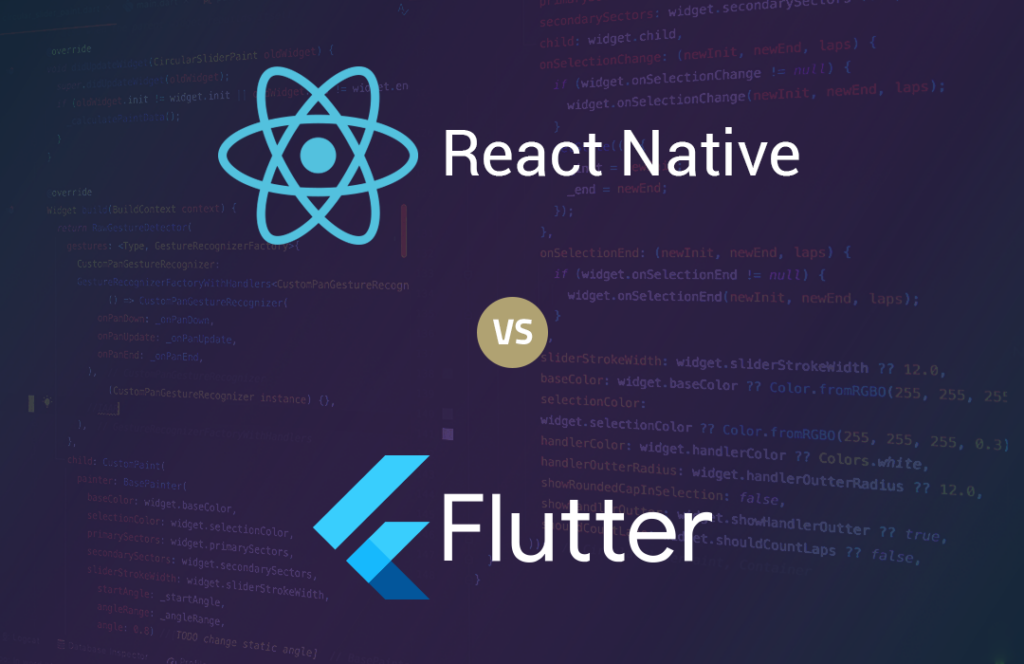

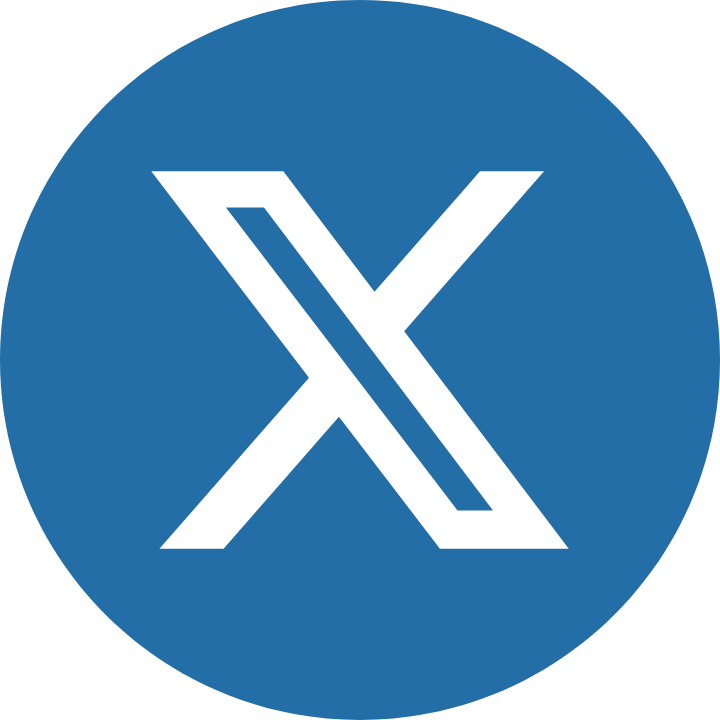



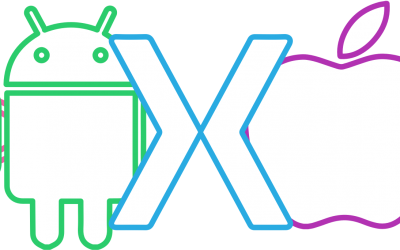
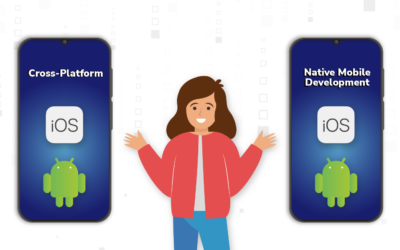



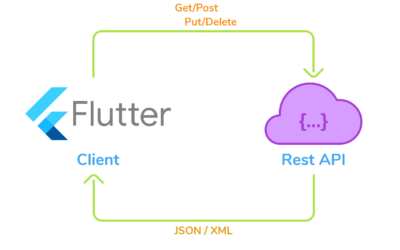
I gotta say, I’m a bit skeptical about this assertion that Flutter offers significantly faster app startup times due to AOT compilation. Don’t get me wrong, I’m all for exploring cross-platform app development options, but I think we’re glossing over the fact that React Native has made huge strides in recent years too! The trade-offs between Flutter and React Native are still a topic of debate in our team. Can someone enlighten me on how the author’s experience translates to real-world apps?
I’m loving this post on Flutter Vs. React Native! How do you think the rapidly expanding cross-platform app development ecosystem of Flutter will affect its adoption rate compared to established frameworks like React Native?